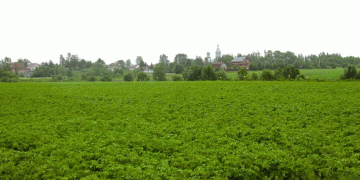Recent market reports from the Bundesanstalt für Landwirtschaft und Ernährung (BLE) reveal significant increases in tomato deliveries from the Netherlands and Belgium to German markets. These imports, particularly of cherry and vine tomatoes, have shaped the scene, while Italian, Spanish, and Polish products supplemented the market, especially in cities like Munich and Berlin.
Increased Supply Meets Slower Demand
The availability of tomatoes has expanded considerably, driven by intensified shipments from Dutch growers. While this increase in supply has diversified the options available to consumers, it has also created challenges for traders. In many cases, demand has struggled to keep pace with the growing supply, leading to occasional price reductions as vendors aim to prevent excess stock.
This oversupply has affected pricing strategies across the market. Some traders have had to reduce prices to clear stock, especially for high-volume varieties such as round tomatoes. However, the market has also seen instances where costs increased due to rising procurement prices, reflecting the complex dynamics at play in balancing supply and demand.
Regional Variations and Market Adaptations
Regional differences were also observed in the market. In cities like Berlin, locally produced tomatoes have lost market share as imported products dominate. Meanwhile, in Munich, Polish tomatoes complemented the market, offering additional choices for consumers.
Notably, improved storage and distribution capabilities have allowed for more stable pricing in some areas, despite the supply pressures. However, the competition between domestic and imported tomatoes continues to be a significant factor affecting market conditions, especially as foreign products often bring cost advantages due to scale.
Market Outlook
The market for tomatoes in Germany remains highly dynamic, influenced by the strong presence of imports from neighboring countries. For producers, understanding these market pressures is essential for planning future harvests and aligning with demand trends. Traders and distributors, meanwhile, must remain flexible to navigate price fluctuations and optimize stock management.
As consumer demand evolves and the balance of domestic versus imported products shifts, the German tomato market will continue to face challenges related to oversupply, pricing, and competition. Strategic adaptations, both by producers and traders, will be key to maintaining profitability in this changing landscape.

































